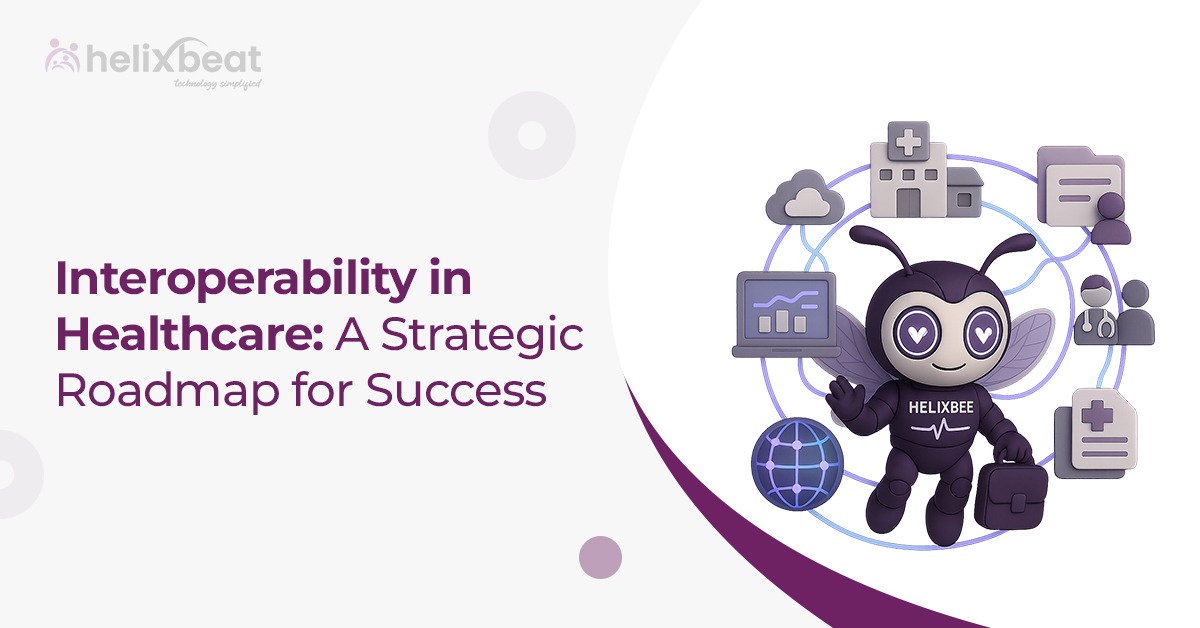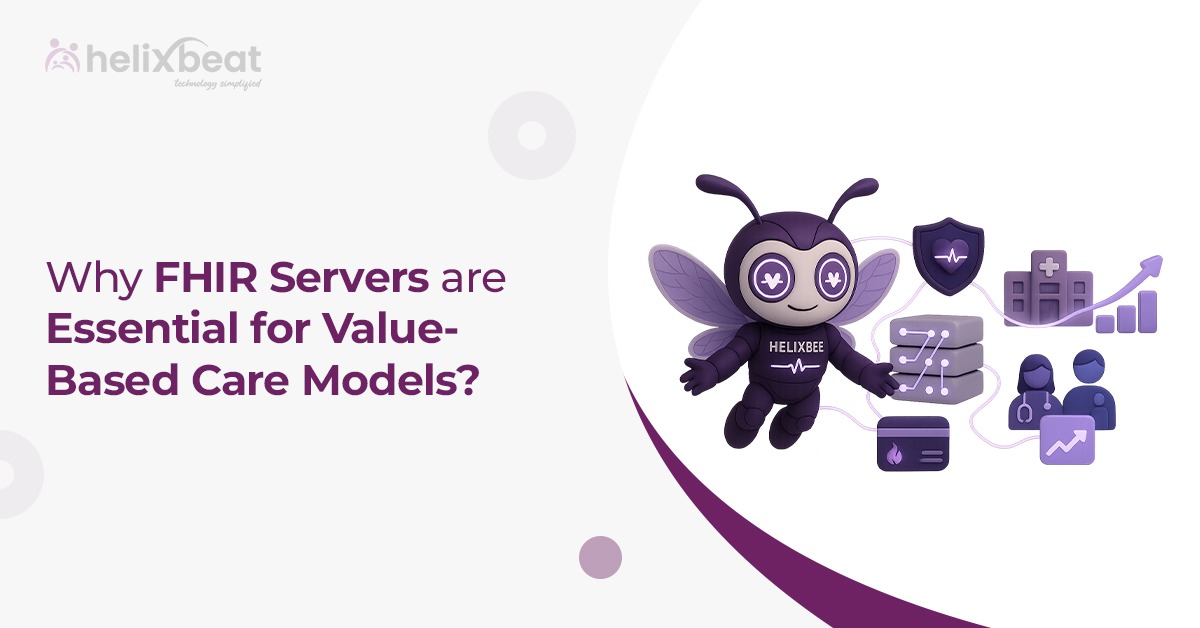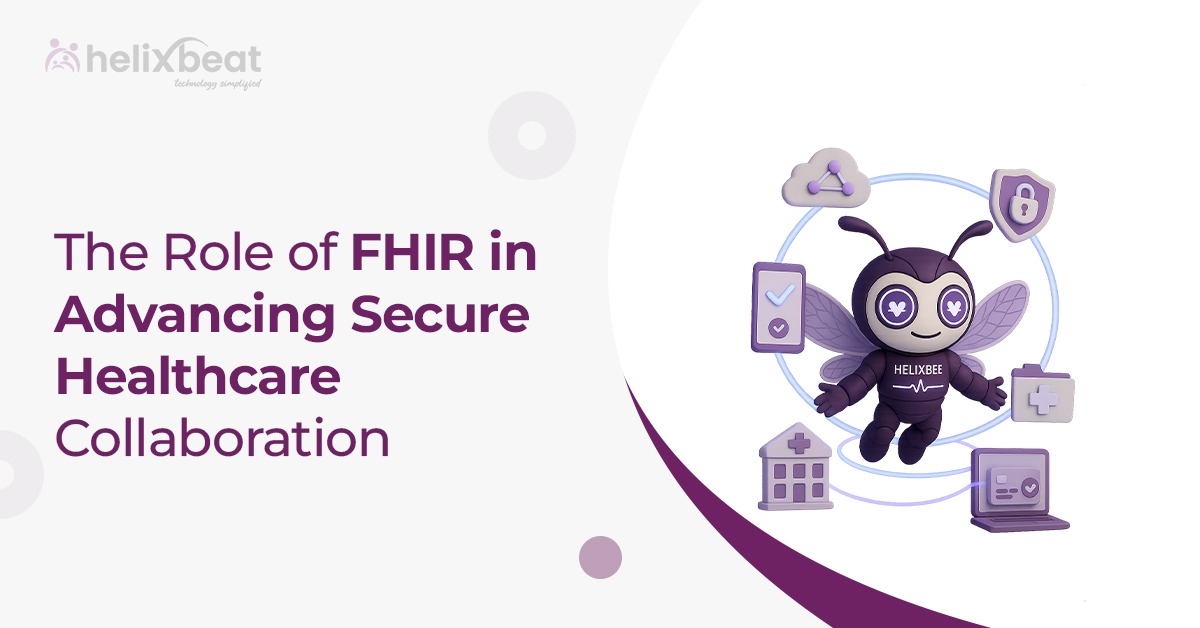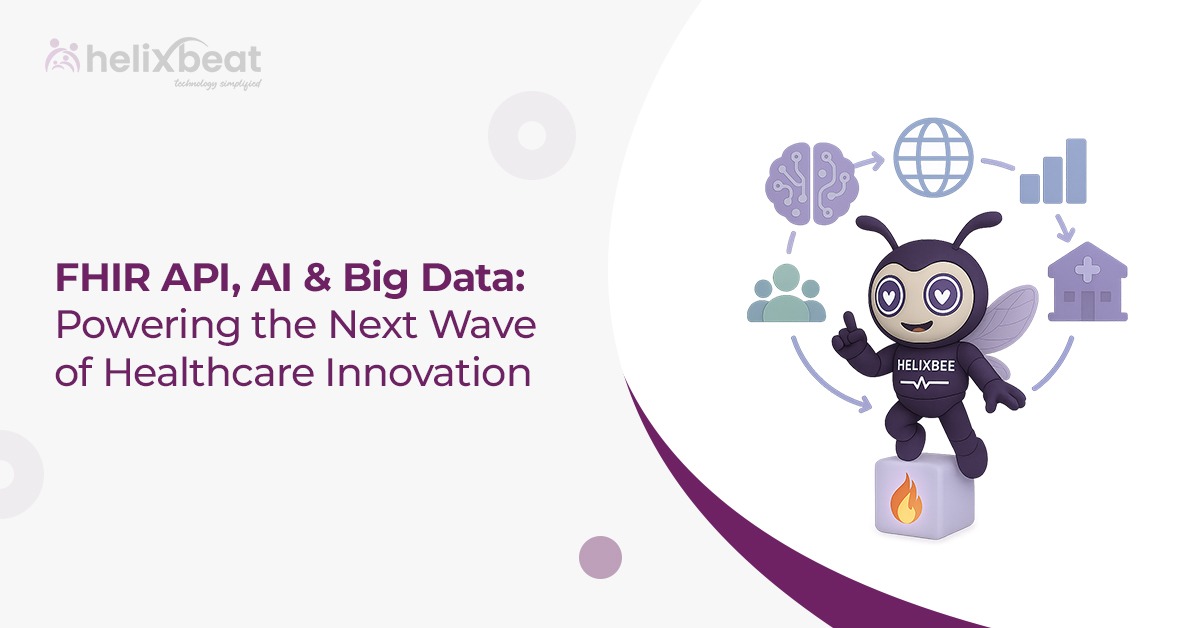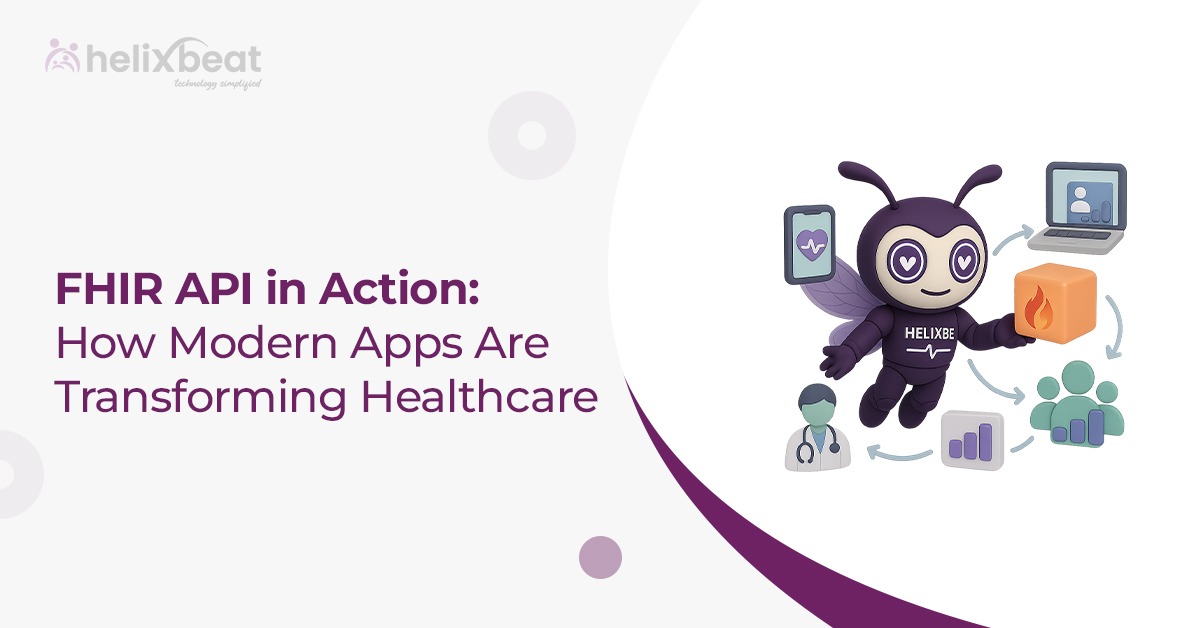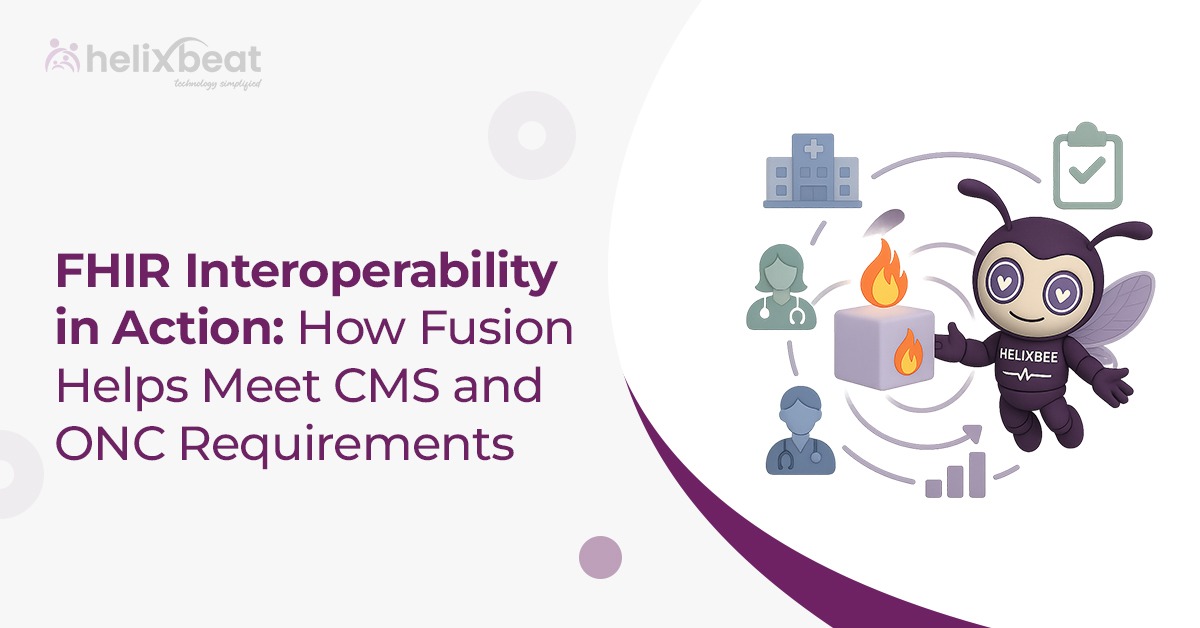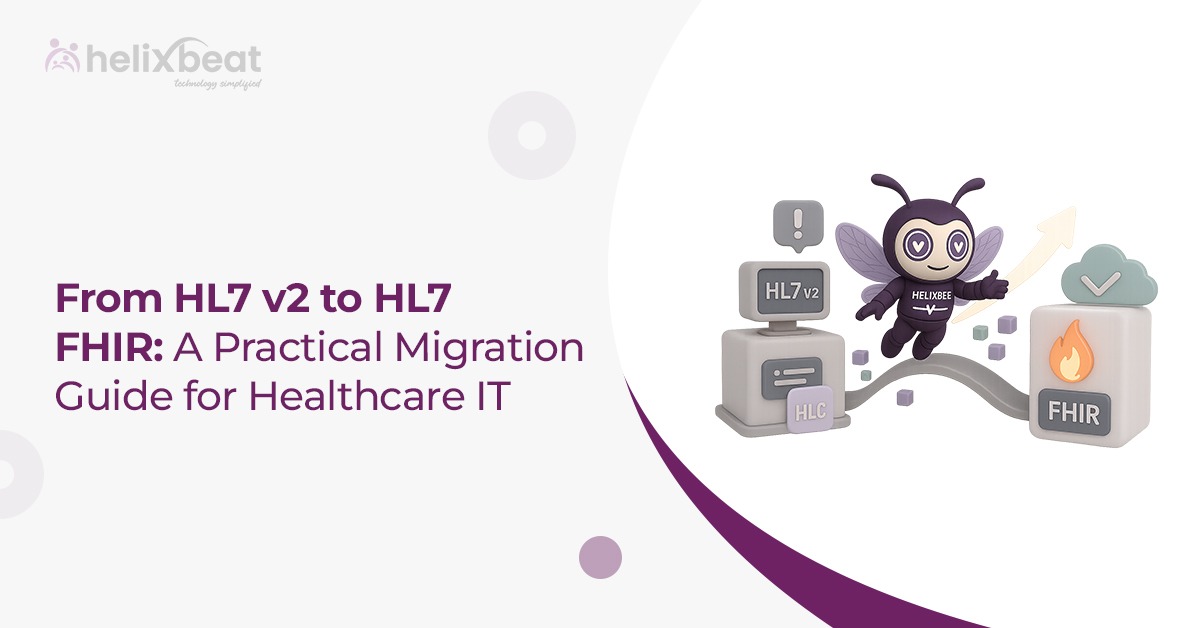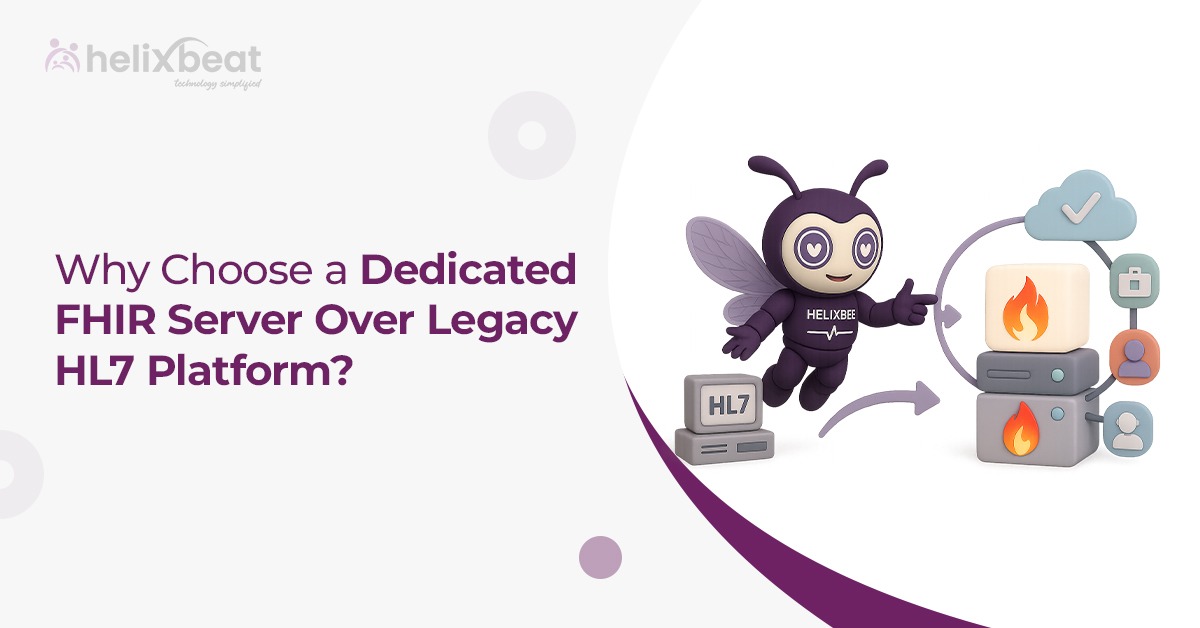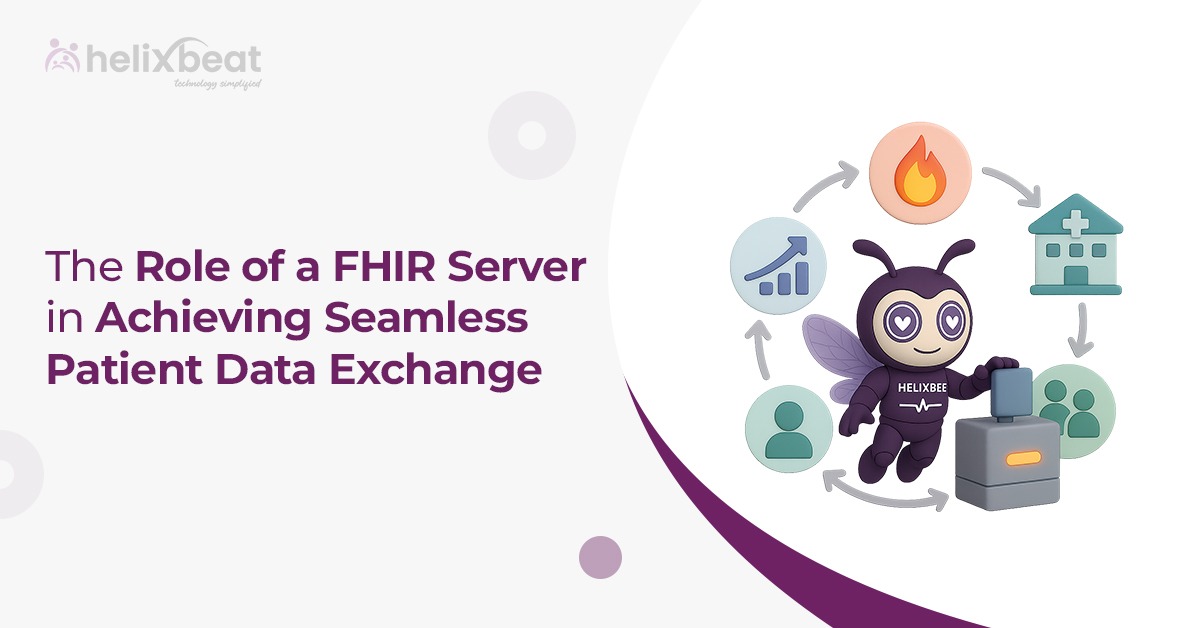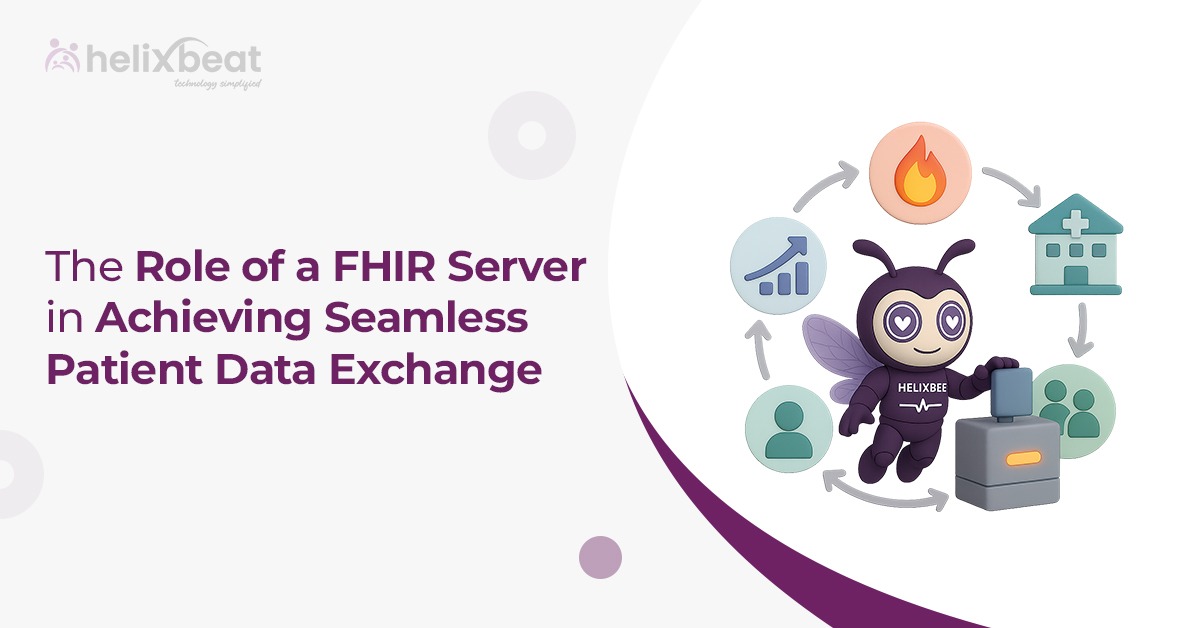Why Should You Prioritize Data Standardization?
Over 80% of healthcare providers face interoperability challenges, leading to errors and inefficiencies. Standardizing data ensures seamless collaboration, better outcomes, and regulatory compliance.
Helixbeat’s FUSION eliminates data silos by standardizing patient information, cutting redundant processes by 30%, and ensuring compliance with CMS mandates, avoiding fines up to $1.5 million.
Internal System Integration
Connects fragmented EHR systems within a hospital, reducing data entry duplication by 50% and ensuring seamless access to critical patient records.
Lab Result Standardization
Converts lab data into FHIR-compatible formats, improving interoperability and cutting duplicate test orders by 25%, saving $200–$400 per patient annually.
Streamlined Referrals
Standardizes referral records, ensuring specialists receive complete, error-free patient histories, reducing referral processing delays by 30%.
Insurance Compliance
Meets CMS interoperability mandates, preventing penalties while accelerating insurance claim approvals, improving provider cash flow by 20%.
Data Sharing with Partners
Ensures labs, pharmacies, and external providers seamlessly access compatible data, improving collaboration and reducing communication costs by 60%.
Future-Ready Systems
Prepares healthcare organizations for AI-driven analytics and IoT integration, ensuring long-term adaptability to emerging technologies.
How does the idea of unified systems sound to you?

What Makes FUSION Stand Out?
Standardizes healthcare data for seamless interoperability, reducing errors by 90% and ensuring compliance with regulatory mandates.
Error-Free Collaboration
01
FUSION eliminates 90% of errors caused by incompatible data formats, reducing liability and ensuring better care coordination across systems.
- Standardized patient records
- Fewer redundancies.
- Improved care outcomes.
Regulatory Compliance Guaranteed
02
Avoid CMS penalties of up to $1.5 million annually with 100% compliance through FHIR-based data sharing and integration.
- CMS-compliant data sharing.
- Lower regulatory risks.
- Future-proof operations.
Tangible Cost Savings
03
By reducing redundant tests by 25% and streamlining claims, FUSION saves providers $1,000–$2,000 per patient annually.
- Measurable financial impact.
- Increased operational efficiency.
- Enhanced patient satisfaction.
What Sets Us Apart
Our expertise in digital transformation makes us a perfect match for your needs. Join us in bringing your vision to life.
Got a question? We have answers.
Q1. What is Fusion FHIR Server?
Answer: Fusion FHIR Server is a healthcare data interoperability solution designed to streamline data exchange between healthcare systems. It uses the FHIR (Fast Healthcare Interoperability Resources) standard to enable seamless, secure, and real-time communication of patient data across different healthcare platforms and devices.
Q2. How does Fusion FHIR Server improve healthcare data interoperability?
Answer: Fusion FHIR Server enhances healthcare data interoperability by providing a standardized, flexible framework for sharing health information. By leveraging FHIR, it ensures seamless data exchange between disparate healthcare systems, reducing data silos and improving the quality of patient care.
Q3. Is Fusion FHIR Server HIPAA-compliant?
Answer: Yes, Fusion FHIR Server is designed to comply with HIPAA (Health Insurance Portability and Accountability Act) standards, ensuring that patient data is securely transmitted and stored. It supports encryption, access control, and auditing features to protect sensitive health information.
Q4. Can Fusion FHIR Server integrate with existing Electronic Health Record (EHR) systems?
Answer: Yes, Fusion FHIR Server can easily integrate with most existing EHR systems. It supports various healthcare data standards, including HL7 and CDA, and facilitates smooth interoperability with legacy systems, making it a versatile solution for modernizing healthcare IT infrastructure.
Q5. What types of healthcare organizations can benefit from using Fusion FHIR Server?
Answer: Fusion FHIR Server benefits a wide range of healthcare organizations, including hospitals, clinics, health insurance providers, health information exchanges (HIEs), and pharmaceutical companies. It streamlines data sharing across various departments, improving workflow efficiency and patient outcomes.
Q6. What are the main advantages of using Fusion FHIR Server over traditional data exchange methods?
Answer: The main advantages include:
- Standardization: Uses FHIR, the latest healthcare interoperability standard, for efficient data exchange.
- Real-Time Data Sharing: Enables faster and more accurate information transfer.
- Scalability: Can be scaled to accommodate large volumes of healthcare data.
- Security: Ensures that patient data is protected with strong encryption and access control measures.
- Integration: Seamlessly integrates with existing healthcare IT infrastructure.
Q7. How secure is patient data with Fusion FHIR Server?
Answer: Fusion FHIR Server employs robust security measures, including data encryption, role-based access control, and secure authentication protocols. These features ensure that patient data is protected from unauthorized access and complies with privacy regulations such as HIPAA and GDPR.
Q8. Can Fusion FHIR Server be used for cross-border healthcare data exchange?
Answer: Yes, Fusion FHIR Server supports international data exchange, making it suitable for cross-border healthcare collaborations. It complies with global data protection regulations, enabling secure and seamless exchange of health information between countries.
Q9. What is the implementation process for Fusion FHIR Server?
Answer: The implementation process involves assessing your healthcare system’s current infrastructure, followed by configuring the Fusion FHIR Server to integrate with your EHR systems and data sources. Helixbeat offers expert guidance and support throughout the setup and ensures smooth integration with minimal disruption to operations.
Q10. How can I get started with Fusion FHIR Server?
Answer: To get started with Fusion FHIR Server, simply contact Helixbeat for a demo or consultation. Our team will walk you through the setup process, discuss your specific requirements, and provide a customized solution tailored to your healthcare organization’s needs.
Q11. What are healthcare interoperability solutions?
Answer: Healthcare interoperability solutions are technologies that allow different healthcare systems, devices, and applications to exchange and share patient data securely and efficiently, using standardized formats like FHIR or HL7.
Q12. Why is healthcare interoperability important?
Answer: It improves care coordination, reduces errors, streamlines administrative tasks, and enhances patient outcomes by enabling seamless data sharing between healthcare providers.
Q13. What are the benefits of healthcare interoperability solutions?
Answer: They improve patient care, reduce operational costs, increase efficiency, and ensure timely access to critical patient information.
Q14. What is an example of interoperability in healthcare?
Answer: When a patient visits multiple healthcare providers, such as a primary care physician, a specialist, and a hospital, interoperability allows their medical records to be shared seamlessly across these different systems. For instance, if a patient undergoes a blood test at one hospital, the results can be automatically shared with their primary care physician’s system, even if they use different electronic health record (EHR) systems. This ensures that all healthcare providers have the most up-to-date and comprehensive information, leading to better coordinated care and improved patient outcomes.
Q15. What is FHIR software?
Answer: FHIR (Fast Healthcare Interoperability Resources) software is a technology platform that enables healthcare systems to exchange and share patient data using standardized, modern web protocols. It supports interoperability by allowing different healthcare applications to communicate seamlessly.
Q16. What is FHIR compliance?
Answer: FHIR compliance refers to adhering to the FHIR standard for healthcare data exchange. It ensures that systems can securely and efficiently share patient information across platforms, meeting regulatory requirements like HIPAA while improving interoperability.
Q17. What is Fusion FHIR-compliant interoperability software?
Answer: Fusion FHIR-compliant interoperability software is a solution designed to enable secure and seamless exchange of healthcare data across different systems using the FHIR standard. It ensures that healthcare organizations can integrate various applications, improving data sharing, coordination, and patient care while meeting compliance standards.
Q18. What is an HL7 platform?
Answer: An HL7 platform is a system that supports the HL7 (Health Level Seven) standard for exchanging healthcare information. It enables different healthcare applications to communicate, ensuring that patient data is shared securely and efficiently across systems, improving interoperability and care coordination.
Q19. What are the benefits of using an HL7 platform in healthcare?
Answer: An HL7 platform improves data exchange between healthcare systems, reduces errors, enhances patient care, and ensures compliance with industry standards. It streamlines communication between providers, facilitating better coordination, faster decision-making, and more accurate patient information sharing.
Q20. What is HL7 vs FHIR?
Answer: HL7 (Health Level Seven) is an older standard for exchanging healthcare information, primarily focused on messaging formats for clinical data. FHIR (Fast Healthcare Interoperability Resources) is a more modern, flexible standard that uses web technologies for easier integration and faster data exchange. FHIR is designed to address the limitations of HL7 by offering better interoperability and supporting mobile, cloud, and real-time applications.



